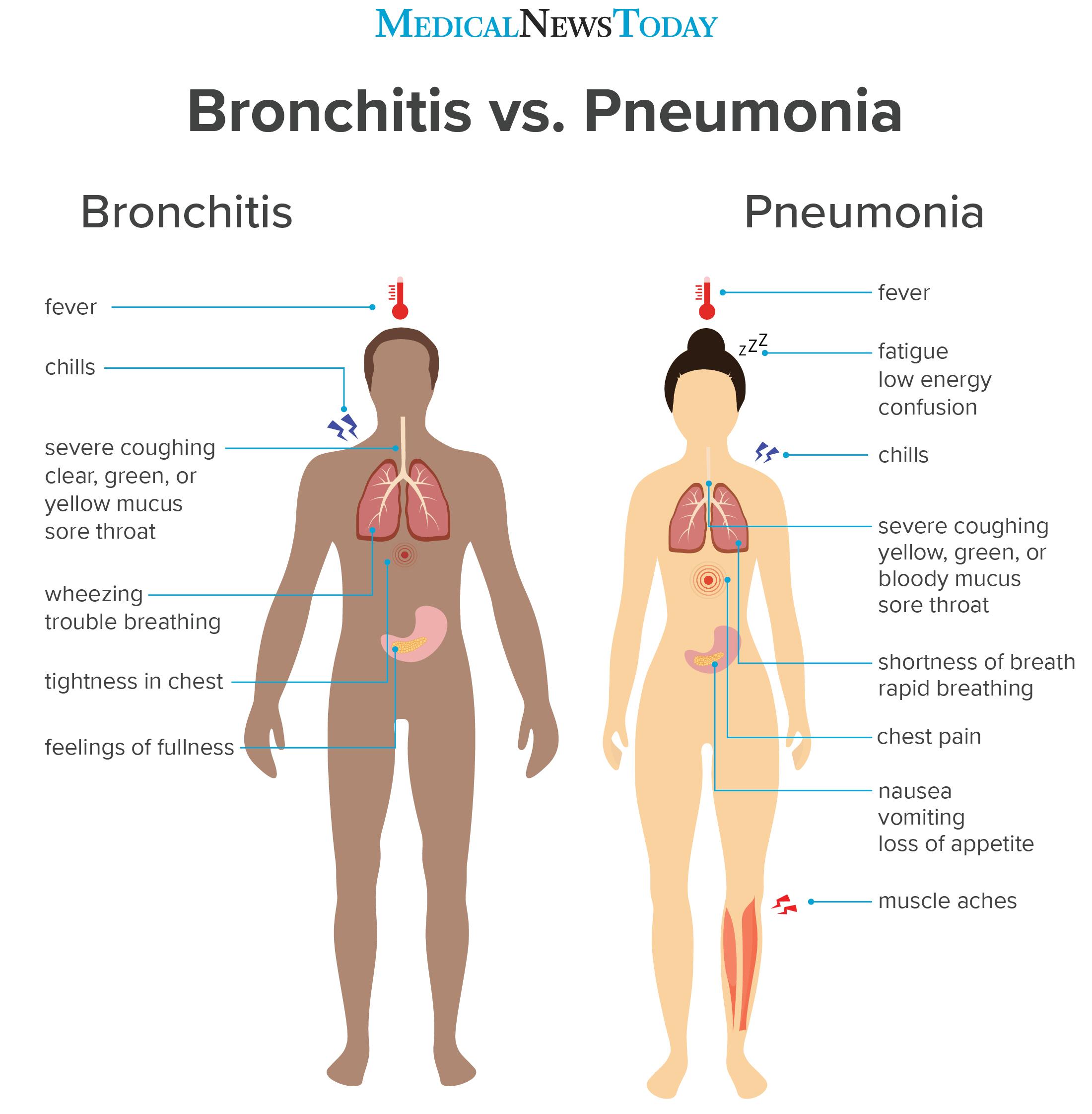Last Updated on 1 year by Francis
Pneumonia and walking pneumonia are two conditions that can cause similar symptoms, yet there are some key differences between the two. If you’ve been diagnosed with one of these conditions, it’s important to know the difference between the two so that you can receive the most appropriate treatment. In this article, we’ll explore the differences between pneumonia and walking pneumonia and explain why it’s so important to understand the distinction.
Pneumonia vs. Walking Pneumonia
| Pneumonia | Walking Pneumonia |
|---|---|
| Caused by bacteria, viruses, or fungi | Caused by different types of bacteria |
| Can be life-threatening | Milder form of the infection |
| Requires immediate medical attention | Symptoms may be less severe |

Contents
Overview of Pneumonia and Walking Pneumonia
Pneumonia is the medical term for an infection in the lungs that cause inflammation of the air sacs, leading to difficulty breathing and a fever. Walking pneumonia, on the other hand, is a less severe form of pneumonia that is caused by a bacterial or viral infection. It is often referred to as “atypical pneumonia” because the symptoms are less serious than those associated with traditional pneumonia. While both illnesses are caused by bacteria or viruses, the difference between pneumonia and walking pneumonia lies in the severity of the symptoms and the type of treatment required.
Symptoms of Pneumonia and Walking Pneumonia
The symptoms of pneumonia can be severe, and can include fever, chills, chest pain, coughing up mucus, and difficulty breathing. In more severe cases, pneumonia can cause confusion, fatigue, and even death. Walking pneumonia, on the other hand, usually has milder symptoms such as a dry cough, headache, low-grade fever, and fatigue. The symptoms of walking pneumonia can often be mistaken for a cold or the flu.
Treatment of Pneumonia and Walking Pneumonia
Treatment for pneumonia usually consists of antibiotics and rest. Patients may also need to be hospitalized if the symptoms are severe enough. Walking pneumonia, however, usually does not require treatment and can often be managed at home with rest and over-the-counter medications. In some cases, antibiotics may be necessary if the symptoms worsen.
Difference in Severity of Pneumonia and Walking Pneumonia
The primary difference between pneumonia and walking pneumonia is the severity of the symptoms. Traditional pneumonia can cause severe symptoms and may require hospitalization, while walking pneumonia typically has milder symptoms and can be managed at home. Additionally, traditional pneumonia is often caused by bacteria, while walking pneumonia is usually caused by either a virus or bacteria.
Complications of Pneumonia and Walking Pneumonia
Pneumonia can cause a variety of serious complications, including respiratory failure, sepsis, and even death. Walking pneumonia, while not as severe, can still cause complications such as bronchitis, sinus infections, and ear infections.
Duration of Pneumonia and Walking Pneumonia
The duration of pneumonia and walking pneumonia can vary depending on the severity of the illness and the individual’s response to treatment. Pneumonia can last anywhere from a few days to several weeks, while walking pneumonia may last several weeks or even months.
Diagnosis of Pneumonia and Walking Pneumonia
The diagnosis for both pneumonia and walking pneumonia typically involves a physical exam, chest x-ray, and blood tests. In some cases, a sputum culture may also be taken to identify the type of bacteria or virus causing the infection.
Prevention of Pneumonia and Walking Pneumonia
The best way to prevent both pneumonia and walking pneumonia is to practice good hygiene, get vaccinated, and avoid contact with people who are ill. Additionally, quitting smoking can help reduce the risk of developing pneumonia.
Conclusion
Pneumonia and walking pneumonia are both illnesses that are caused by bacteria or viruses and can cause a variety of symptoms. The primary difference between the two is the severity of the symptoms and the type of treatment required. It is important to seek medical attention if you experience any of the symptoms associated with either illness.
Top 6 Frequently Asked Questions
What is Pneumonia?
Pneumonia is an infection of the lungs caused by bacteria, viruses, or fungi. It can be acute or chronic and can range from mild to life-threatening. Symptoms vary depending on the type of pneumonia, but can include coughing, chest pain, fever, and difficulty breathing. Treatment typically involves antibiotics and supportive care.
What is Walking Pneumonia?
Walking pneumonia, also known as atypical pneumonia, is a milder form of pneumonia caused by certain bacteria. Symptoms of walking pneumonia are usually milder than those of typical pneumonia and can include a dry cough, low-grade fever, fatigue, and mild chest pain. Treatment includes antibiotics and rest.
What is the Difference Between Pneumonia and Walking Pneumonia?
The primary difference between pneumonia and walking pneumonia is the severity of symptoms. Pneumonia typically causes more severe symptoms such as high fever, chills, chest pain, and difficulty breathing, while walking pneumonia generally causes milder symptoms such as a dry cough, low-grade fever, and mild chest pain. Additionally, walking pneumonia is usually caused by certain bacteria, while pneumonia can be caused by bacteria, viruses, or fungi.
How is Pneumonia Treated?
Pneumonia is typically treated with antibiotics and supportive care. Supportive care may include rest, fluids, and over-the-counter medications to relieve symptoms such as fever and pain. Hospitalization may be necessary in more severe cases.
How is Walking Pneumonia Treated?
Walking pneumonia is usually treated with antibiotics and rest. Over-the-counter medications may also be recommended to help relieve symptoms such as fever and pain. Hospitalization is typically not necessary for walking pneumonia.
What are the Complications of Pneumonia?
Complications of pneumonia can include respiratory failure, sepsis, lung abscess, and pleural effusion. It is also possible to develop chronic health problems such as asthma or COPD as a result of pneumonia. It is important to seek medical attention early to reduce the risk of developing complications.
What is walking pneumonia & how is it different from regular pneumonia? | Apollo Hospitals
In conclusion, pneumonia and walking pneumonia are two medical conditions that can cause a person to become very ill. While pneumonia is caused by bacteria or viruses and can be very severe, walking pneumonia is caused by a different type of bacteria and is generally less severe. While both conditions can cause coughing and difficulty breathing, in the case of pneumonia, other symptoms such as fever, chest pain, and fatigue may be present. It is important to recognize the signs and symptoms and seek medical attention if symptoms worsen.








